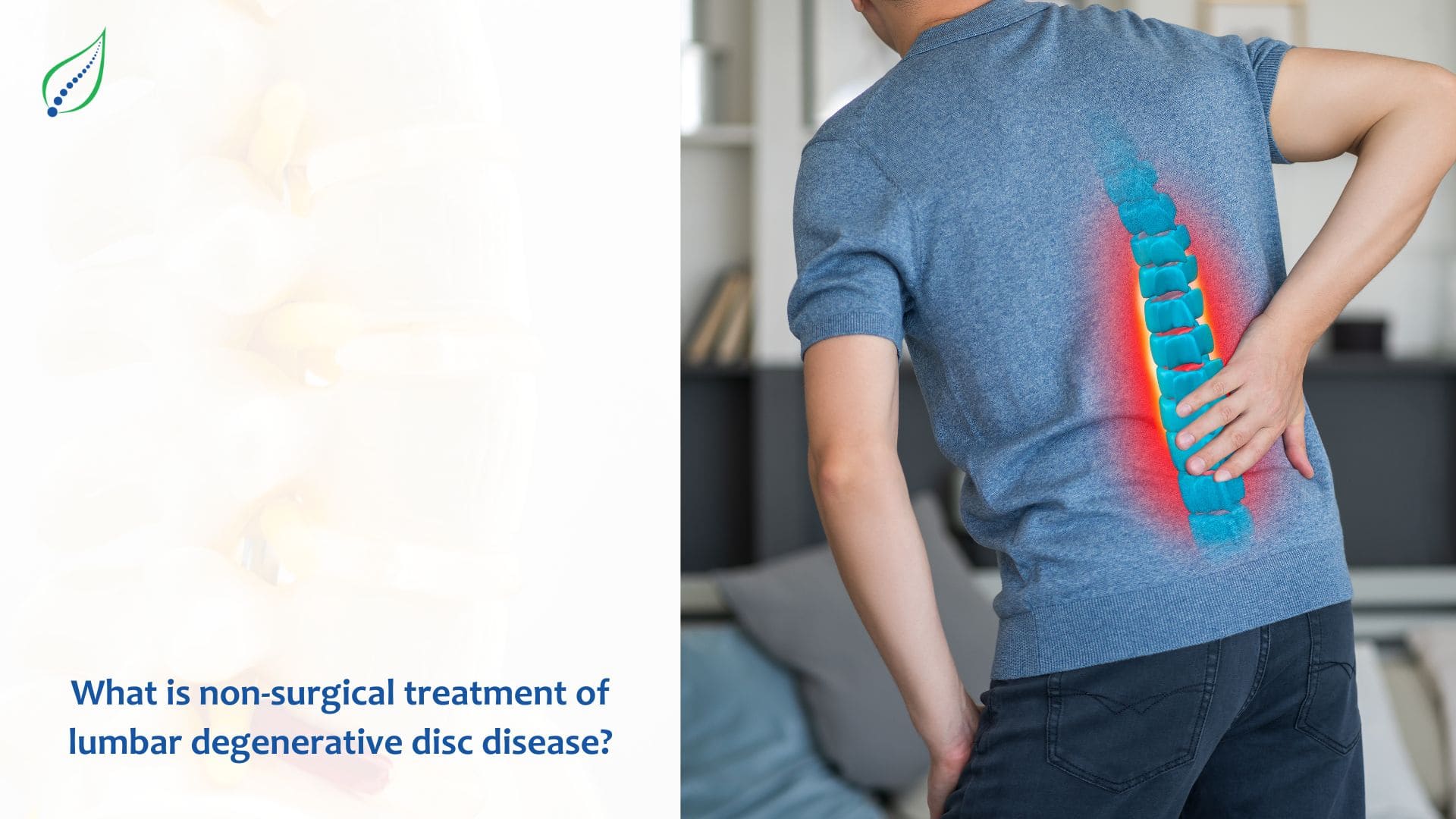What is Non-Surgical Treatment Of Lumbar Degenerative Disc Disease?
Lumbar degenerative disc disease (LDDD), this name may sound like an illness but it's a usual condition that frequently leads to chronic low back pain. When we grow old, the discs of our spine in the lower part undergo changes which are called age-related wear and tear or degeneration. These changes happen because over time these intervertebral discs lose their hydration causing them to become less flexible and lose shock-absorbing qualities. In some people, this disc degeneration can lead to pain, inflammation and other symptoms.
Good news, most patients with lumbar DDD can get relief from non-surgical treatments. Let us examine closer some of the non-surgical approaches that are used to manage symptoms related to lumbar degenerative disc disease.
Medications for Pain Relief
Over-the-counter pain relievers such as ibuprofen, naproxen and acetaminophen are frequently used to manage back pain from LDDD. These non-prescription NSAIDs can assist in decreasing both the hurting sensation and swelling. For severe pain, doctors may suggest prescription medications like muscle relaxants or pain relievers for a short period of time.
Sometimes, doctors might suggest using oral corticosteroids to actively diminish swelling around the nerve root that's causing pain. Steroids should be taken for 7-10 days only because they can have adverse effects if used longer. The purpose is to alleviate sharp pain so the patient can start and endure additional remedies such as physical therapy.
Spinal Injections: Transforaminal epidural injections and can help reduce inflammation and pain in the affected area.
Physical Therapy and Exercise
Physical therapy is a key part of non-surgical care for lumbar DDD. A physiotherapist can create a special exercise and stretch plan to lessen pain, boost flexibility and movement ability, as well as make the muscles that hold up the lower back.
Best of all, exercises that aim for the core muscles are really good. The core means the muscles in your back, abdomen, hips and pelvis. They cooperate to make sure that your spine stays steady and strong. When these muscles become weak, added pressure goes on the structures of your spine which might make pain and degenerative changes worse. Core strengthening helps provide better support and alignment for the lower back.
A complete physical therapy plan for LDDD could also have other passive therapies. Some of them are:
- Heat and cold therapy to reduce pain and inflammation
- Deep tissue massage to relax tense muscles and promote circulation
- Ultrasound therapy which uses sound waves to generate heat and increase blood flow
- Electrical stimulation of nerves and muscles (TENS) to alleviate pain
Mixing of active exercise/stretching with passive modalities can result in a powerful way to handle lumbar DDD indications. The important part is to consistently follow physical therapy and continue with home exercise routine. Significant improvement might need a few weeks before showing up.
Lumbar Support: Lumbar support (Lumbar Braces) is beneficial for patients suffering from degenerative disc disease. It helps to limit excessive spine movement and reduce mechanical forces. It also helps to stabilize and correct spine deformity.
Alternative Therapies
Other alternative therapies sometimes used for LDDD symptoms include:
- Therapeutic massage
- Mindfulness meditation to reduce stress and muscle tension
- Yoga to improve flexibility and core strength
Like all treatments, the effects can differ for each individual.
Lifestyle Modifications
Apart from medical remedies, there are certain lifestyle alterations that can help lessen the pain and symptoms of lumbar DDD. Some beneficial modifications comprise:
-
Maintaining a healthy weight
Extra weight can add strain to the lower back's structures, including discs, facet joints and muscles. Shedding just a little weight might have a significant impact on pain and function.
-
Using proper posture and body mechanics
Cautiously observe your posture when you are sitting, standing and moving. Do not slouch or stay in one position for an extended period of time. When lifting objects, bend at the knees and hips rather than rounding your lower back.
-
Quitting smoking
Moreover, smoking can make degenerative disc disease worse. The nicotine and other substances in cigarettes narrow the blood vessels that lead to your discs. This lowers the supply of oxygen and nutrients, speeding up the degeneration process.
Wrapping up
Most patients with lumbar degenerative disc disease can benefit from non-surgical treatment, which includes medication, spinal injections, physical therapy, alternative treatments and changes in lifestyle. This approach typically helps to control pain and enhance everyday function.

_1747226427_1751827070.png)
_1744793045_1751827442.png)
_1743751136_1751830603.png)
